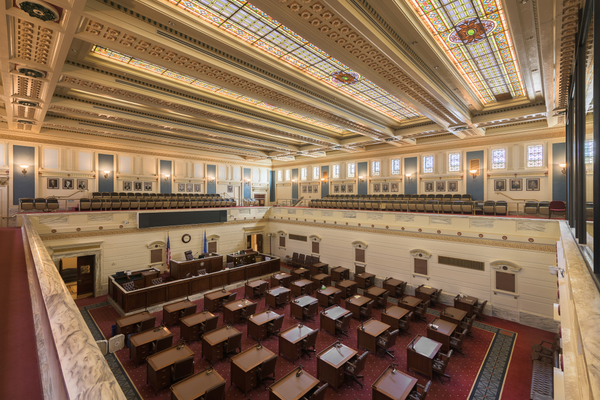Senate passes movie, TV rebate measure
Oklahoma’s full Senate gave its approval May 19 to Senate Bill 608, the “Filmed in Oklahoma Act of 2021.”
The measure, by Senate Appropriations Vice Chair Sen. Chuck Hall, R-Perry, and House Appropriations and Budget Subcommittee on Finance, Revenue and Taxation Chair Rep. Scott Fetgatter, R-Okmulgee, establishes a $30 million cap on first come, first-served rebates for TV and film productions in Oklahoma.
Hall said this new rebate package builds on the tremendous success of the state’s existing rebate program, which previously had a cap of $8 million, and strengthens requirements for the use of Oklahoma locations and facilities in order to qualify for the maximum rebates.
He noted that in Fiscal Year 2020, the $8 million investment made in film and TV productions resulted in more than $32.8 million spent directly on Oklahoma crews and vendors, with 3,960 jobs created for Oklahoma residents. In the current fiscal year, the estimate was for 33 film and TV productions creating 10,218 local jobs with a direct economic impact of $161.7 million.
“This legislation is about diversifying Oklahoma’s economy by supporting homegrown entertainment businesses and jobs and supporting local economies,” Hall said. “We now have more sound stages and post-production facilities that have come online and are ready to capitalize on this enhanced rebate package. Make no mistake, this legislation will boost entertainment production right here in Oklahoma, creating thousands of jobs for Oklahomans and supporting local hotels, restaurants and other Oklahoma businesses.”
The funding would be distributed on a first-come, first-served basis, offering a base percentage of 20% on qualified Oklahoma expenditures for film and TV productions. As an additional incentive to utilize rural counties and towns, there’s a 3% rebate if 25% of filming is done in a county with a population of less than 250,000. The package also includes an additional 2% rebate if the project is filmed in a town of under 13,000. There are additional rebates available for using Oklahoma sound stages and post-production facilities, for pilot episodes of TV programs, for filming one or more seasons or for multi-picture deals.
Education funding measure passes Senate
A measure aimed at addressing school funding equity for brick-and-mortar public and charter schools also passed the Senate on Thursday.
Authored by Sen. John Michael Montgomery, R-Lawton, Senate Bill 229, also known as the Redbud School Funding Act, would tap into more than $30 million of medical marijuana tax revenue and the State Public Common School Building Equalization Fund to use the dollars as annual grants for more than 300 public school districts and brick-and-mortar charter schools that receive below average local tax revenue funding.
The measure came at the heels of the State Board of Education’s decision to grant charter schools local property tax revenues, which would shift millions of dollars of funding away from local school districts. If signed by Gov. Stitt, the Redbud School Funding Act would reverse this decision.
“This funding act creates equity for our public schools and gives a much-needed revenue boost to many districts across the state,” Montgomery said. “We’ve expanded funding for our public schools over the past five years, but this measure will create a continual source of revenue for districts that traditionally had little access to local ad valorem dollars to construct and maintain their buildings. Oklahoma is one of only four states that doesn’t have an equalization fund to balance our school-building dollars. It’s far past time we put this into law to create an equitable funding source for our schools and our students.”
The measure unanimously passed the House in April and was authored by Rep. Kyle Hilbert, R-Bristow.
“The Redbud School Funding Act protects the tax dollars that citizens contribute to their traditional local public schools by ensuring schools continue to receive these dollars,” Hilbert said. “It is a targeted investment of $38.5 million to help students in the lowest-funded public schools in our state.”
The measure now heads to the governor’s desk for his consideration. If signed into law, the grants would be available to public schools beginning with the 2021-2022 school year.


